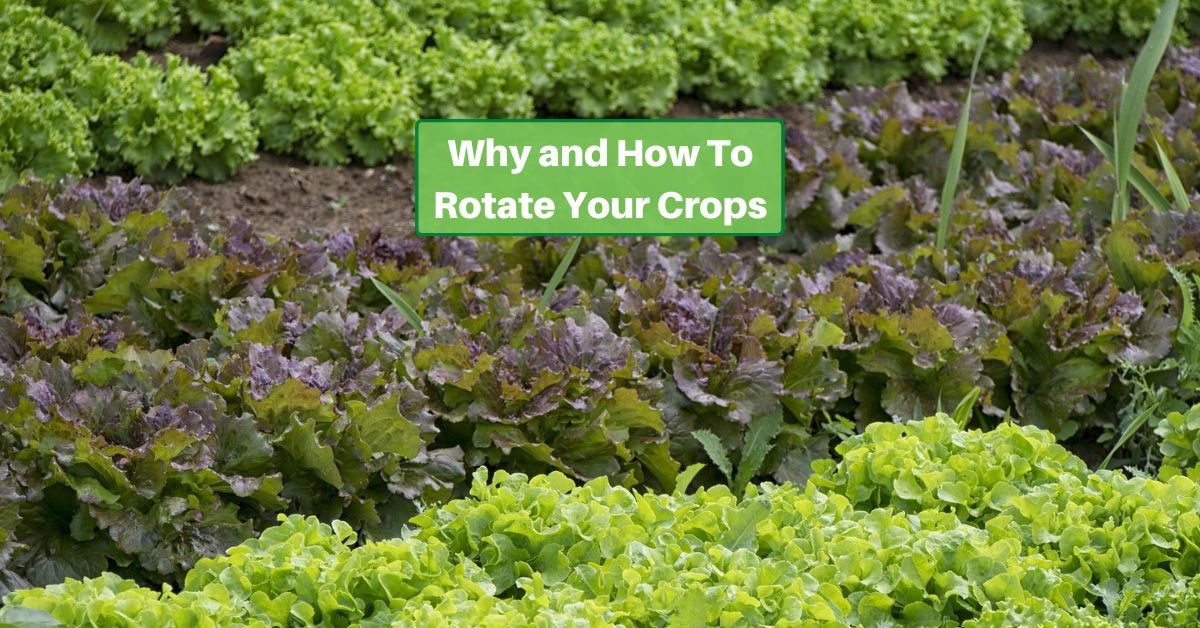Almost every gardener wants to be able to have a bountiful harvest year after year. But planting the same plants in the same place can deplete the soil, lower your yield, and even increase the risk of pest problems. So what can you do to have sustained success time after time?
In the realm of sustainable gardening practices, crop rotation is a time-honored technique to enhance soil fertility, thwart pests and diseases, and maximize the yield potential of small home gardens. It’s actually been practiced for centuries!
Whether you are cultivating a modest plot or a few containers on a balcony, understanding and implementing a well-planned crop rotation plan can be the key to successful and bountiful harvests for decades to come.
The Basics of Crop Rotation: Why It Matters
Crop rotation involves the systematic repositioning of different plant families in specific sequences from one growing season to the next. That’s a mouthful, but the primary goal is to prevent the buildup of soil-borne pests and pathogens that could negatively impact plant health and productivity.
Also, different crops have varying nutrient demands, and rotating them can help ensure that soil nutrient levels remain balanced.
Benefits of Crop Rotation
- Pest and Disease Management: As various crops cycle through different sections, pests and diseases that target specific plant families are disrupted. This break in the life cycle reduces the risk of infestations.
- Soil Health: Different plants have distinct nutrient requirements. By rotating crops, you prevent the excessive depletion of certain nutrients and create a more balanced soil profile.
- Weed Control: Crop rotation can impede the establishment of weeds that are specific to certain crops. This reduces competition for resources and minimizes the need for excessive weeding.
- Enhanced Yields: Healthier plants in well-nourished soil are more likely to produce higher yields. By preventing nutrient imbalances and soilborne diseases, crop rotation contributes to overall garden productivity.
- Sustainability: By avoiding the need for adding extra insecticides and fertilizer and promoting a healthy ecosystem, crop rotation helps create sustainable gardening practices.
Step 1: Categorizing Plants into Families
To start a crop rotation plan, you should first categorize the crops in your garden into plant families. Plants within the same family often share similar pest and disease vulnerabilities, so keeping them apart for a season or two can break the lifecycle of potential problems.
Common plant families include the Brassicaceae (cabbage, broccoli, cauliflower), Solanaceae (tomatoes, peppers, potatoes), and Fabaceae (beans, peas).
Step 2: Planning Rotation Sequences
Once you’ve identified plant families, devise a rotation sequence that spans several years.
A classic three-year rotation is an excellent starting point. Begin by dividing your garden into sections and designating each section for a specific plant family. The following growing season, move plants to the next section and introduce a new crop.
In the third season, you’ll return the original plant family to its original section, having completed a full rotation cycle.
Step 3: Consider Cover Crops
Cover crops, often referred to as “green manure,” are an invaluable addition to any crop rotation plan. During periods when your main crops aren’t growing, you can plant cover crops like legumes (such as clover or vetch) that help return nitrogen to the soil, or grains (like rye or oats) that protect the soil from erosion and add organic matter when tilled under.
Cover crops contribute to overall soil health and can be strategically chosen based on the nutrient needs of the main crop that will be planted there in the next season.
Step 4: Record Keeping
Maintaining a garden journal is crucial for successful crop rotation. Document what you plant in each section, when you plant it, and how it performs. This record will provide insights into the effectiveness of your rotation plan, helping you make adjustments over time. It’s also a handy reference when planning future seasons.
Common Crop Rotation Patterns
- Three-Year Rotation: As mentioned earlier, a three-year cycle is a straightforward approach. It’s suitable for gardens with limited space and offers enough time for soil recovery and pest disruption.
- Four-Year Rotation: This extends the cycle, allowing for more thorough soil rejuvenation. It’s particularly useful for larger gardens and areas with persistent pest or disease issues.
- Six-Year Rotation: More complex but highly effective, a six-year rotation can involve multiple plant families and cover crops. This pattern is often employed in larger gardens or on farms.
Potential Challenges and Considerations
While crop rotation offers numerous benefits, it’s essential to consider potential challenges:
- Limited Space: Small gardens might struggle to accommodate lengthy rotation plans. In such cases, focus on minimizing the risk of pest and disease buildup by rotating as best as your space allows.
- Specialized Plants: Some plants are challenging to fit into a strict rotation due to their unique needs. In these cases, consider container gardening or separate growing spaces.
- Research: Understanding the specific pests, diseases, and nutrient needs of each plant family is crucial for successful rotation. Conduct thorough research or consult gardening resources, such as your local nursery.
Crop rotation is a fundamental practice that transcends the size of your garden. From small containers to large plots, this technique contributes a lot to the long-term health and productivity of your plants.
By thoughtfully organizing planting sequences and incorporating cover crops. It requires some record-keeping, but you can maximize harvests, reduce the need for chemical interventions, and create a flourishing garden ecosystem that brings beautiful and delicious crops season after season.









